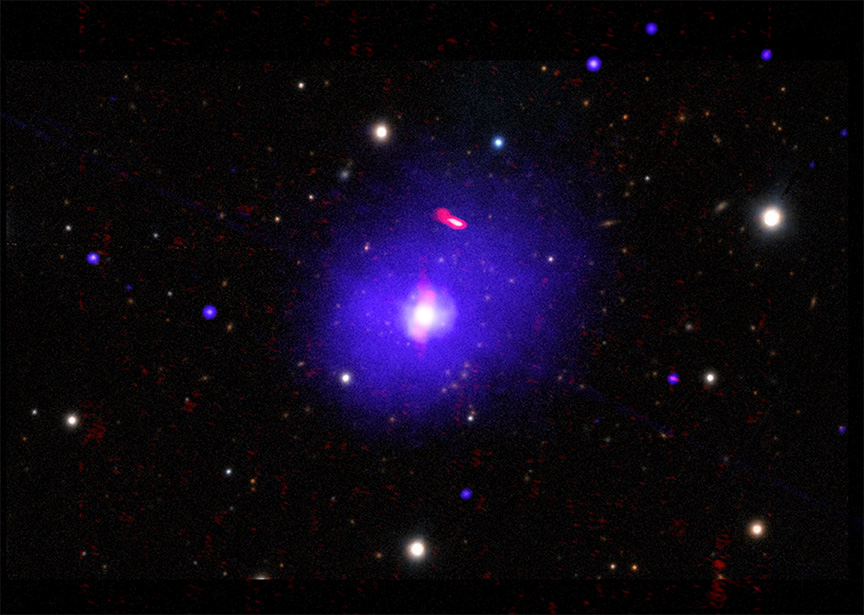Chandra Shows Giant Black Hole Spins Slower Than Its Peers
Posted: Thu Jun 30, 2022 3:13 pm
H1821+243: Chandra Shows Giant Black Hole Spins Slower Than Its Peers
NASA | MSFC | SAO | Chandra X-ray Observatory | 2022 Jun 30
Evidence for a Moderate Spin From X-ray Reflection of the High-Mass
Supermassive Black Hole in the Cluster-Hosted Quasar H1821+643 ~ Júlia Sisk-Reynés et al
NASA | MSFC | SAO | Chandra X-ray Observatory | 2022 Jun 30
H1821+643 is a quasar powered by a supermassive black hole, located about 3.4 billion light years from Earth. Astronomers used /about/ to determine the spin of the black hole in H1821+643, making it the most massive one to have an accurate measurement of this fundamental property, as described in our press release. Astronomers estimate the actively growing black hole in H1821+643 contains between about three and 30 billion solar masses, making it one of the most massive known. By contrast the supermassive black hole in the center of the Milky Way galaxy weighs about four million suns.
This composite image of H1821+643 contains X-rays from Chandra (blue) that have been combined with radio data from NSF's Karl G. Jansky Very Large Array (red) and an optical image from the PanSTARRS telescope on Hawaii (white and yellow). The researchers used nearly a week's worth of Chandra observing time, taken over two decades ago, to obtain this latest result. The supermassive black hole is located in the bright dot in the center of the radio and X-ray emission.
Because a spinning black hole drags space around with it and allows matter to orbit closer to it than is possible for a non-spinning one, the X-ray data can show how fast the black hole is spinning. The spectrum — that is, the amount of energy as a function wavelength — of H1821+643 indicates that the black hole is rotating at a modest rate compared to other, less massive ones that spin close to the speed of light. This is the most accurate spin measurement for such a massive black hole. ...
Evidence for a Moderate Spin From X-ray Reflection of the High-Mass
Supermassive Black Hole in the Cluster-Hosted Quasar H1821+643 ~ Júlia Sisk-Reynés et al
- Monthly Notices of the RAS 514(2):2568 (Aug 2022) DOI: 10.1093/mnras/stac1389
- arXiv > astro-ph > arXiv:2205.12974 > 25 May 2022
